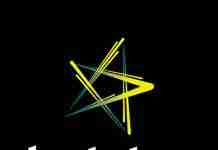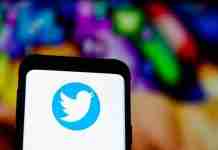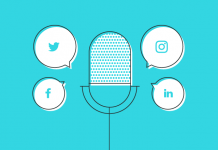The only thing that is rocket science is rocket science–and sometimes, making perfect landing pages too. Especially, when your targeted audience is businesses instead of people.
While the common notion about the latter is that emotion plays a big part in their conversation, it’s a different story for the former as “logic” also calls the shot in their case. Although, understanding the right balance of emotion and logic sounds daunting to apply in a landing page. To maintain a minimal bounce rate on your site, you’ve got to make sure that everything is pitch perfect. The magic formula encompasses a lot of ingredients and we’re here to tell you about them—or just to be safe, we’ll tell you which elements need your focus on and vice-versa.
So, what’s the anatomy of a great landing page like? Let’s have a look.
#1 Different page, different story:
So, first thing first, don’t commit the mistake that the majority of marketers usually commit—PLEASE DON’T make your targeted audience land on your homepage.
Your ad campaign could be about a specific feature or service of your business, so it’s always a more fruitful practice to create a tailored landing page that focuses only on the parts of your business that are relevant to your campaign.
Just keep in mind that the conversation that you have started with your customers from your ad stays on the same page (pun intended) when they land on your targeted page.
#2 Start casting the magic with your words:
Okay, now, your customer is on your page and it’s about time you make your first move. You must have heard it a million times over your life that how important first impressions could be. In this scenario, your first impression is your headline.
Your goal is to write an impactful headline, a subheading that compliments it well and a call-to-action that is too hard to let go without interacting.

Take this Lyft landing page for example.
It follows a straight-up no-BS approach here—make a handsome amount of money while driving your car.
Now, if you notice, there are two CTAs here. The one below gives you an instant result of the amount of money you’d be making for the hours you’ll be driving your car—not to mention you get the result right on the same page instead of being redirected to another. If you’re intrigued enough, there’s a simple form waiting for you to sign-up. Doesn’t sound like a lot of work, does it?
#3 Pictures & Videos – Use multimedia but in the right way:
It’s safe to say that pages look dull without visual cues. You must have noticed that companies ensure that all of their pages have some kind of multimedia aid in them.
However, the approach to showcasing your product through pictures has changed a bit over recent years. As people buy from people, a lot of marketers prefer showing pictures of people using their products instead of using pictures of products alone.

The picture above is a screenshot from the Google Pixel 3’s landing page and an example of a people-dominant image of the product.
Using pictures of real people using the product establishes a deeper connection with your audience—so, if you can get high-definition pictures of people using your product, feel free to use them.
Although you have to be careful about the speed of your website and its responsiveness while using multimedia. Also, in case you’re using a video, make sure the video doesn’t distract your customers from the actual product.
#4 Navigation – don’t let your own page distract your
Yes, we get the paradox.
Although the aim of navigation button at the top is to make your audience explore more about your business, it always carries the risk of distracting them into wandering at places on your website that might not be relevant for them.
You could use multiple CTAs (we’ll discuss this later just in case you raised your eyebrows) at different locations of the page to direct them where you want them to be.
#5 Product features – Make their lives better:
You’ve got to think from your targeted audience’s perspective when you’re going to write about the features of your product. The key is to be useful for them because, in the end, the only thing that matters is how useful your product or service would be.
For example, let’s say your business creates mobile-app like version of a website. So, instead of writing, “We create mobile-app like experience of your website”, you could write something like, “Try this mobile-app like experience of your website before you throw your money on developing a mobile app”.
Both of the lines are talking about the same feature but the latter is telling you how it could save you an awful lot of money too.
In all fairness, your landing page is more about your audience than your business—let that sink in.
#6 Testimonials and awards – Are you reliable?
You could tout your product as much as you like but winning the trust of your visitors is altogether a different story.
So, to reassure your audience of your reliability, you show them which businesses (ideally of the same industry) you have worked with along with how their experience was working with you.
You could also tailor your testimonials according to your campaign. In order to do that, you could prepare a spreadsheet of all the testimonials and segregate them according to different niches or your campaigns.
Important tip: Make sure the testimonial has a head-shot. Otherwise, be prepared for a fair share of scepticism.
Apart from testimonials, another important way of showing your reliability is by showing your engagement on social media—in other words, your followers and subscribers.
Another way you can gain an edge over your competitors is by displaying the certificates and awards that you have received. They show independent organisations’ trust in your company over the others in the competitive market—if you give it enough thought, you’d realise how impactful this could be.
#7 Multiple CTAs ARE OKAY:
Regardless of how fantastic your ad campaigns and landing pages might look in your head, there are still fair amount chances of you missing out on a customer.
Remember, CTAs take your visitor closest to your product—hence, the extra attention.
It’s possible that the first CTA that you placed on your landing page might have struck your customer in a mental state when they were not enough convinced about your product.
What would they do next? They scroll down to explore more. After a few minutes, your customer has read enough and they’re good to go. What do they see? BOOM! Another CTA. Click!
Did your second CTA just give you another lifeline?
#8 Short and simple forms:
Forms play a vital role in capturing your customer. A few basic entries in the form are never going to hurt anybody. However, a long form that takes a handful time of a user could be underwhelming for them—and carries a risk of the user losing interest in your product.
So, try keeping your forms goal-oriented, and more importantly, keep them short.
#9 Run A/B tests:
You know what they say, one man’s trash is another man’s treasure. There are chances that one website design that compels a potential client in your product, might not be another client’s cup of coffee.
The point is, different businesses operate with different mindsets and you never know what might work on the next visitor?
So, in order to avoid that dilemma, try different designs and check their conversions. You’d get your best landing page design.
Conclusion:
You must have realised now that creating a great b2b landing page is an art (that you can certainly master). One important thing that you have to keep in mind is the fact that the attention span of humans is getting poor with each passing year and you don’t get a lot of time of your customer—what a shame.
So, in the short span of attention that your ad campaign has won of your visitor, we hope this guide would help you in seizing that opportunity.



![[Case Study] EduKart: Shop The Right Course By Carting It](https://www.whizsky.com/wp-content/uploads/2019/02/EduKart-218x150.png)
![[Case Study] How OnePlus Made It To Top In Indian Market](https://www.whizsky.com/wp-content/uploads/2019/02/oneplus-became-premium-brand-in-India-218x150.jpeg)







